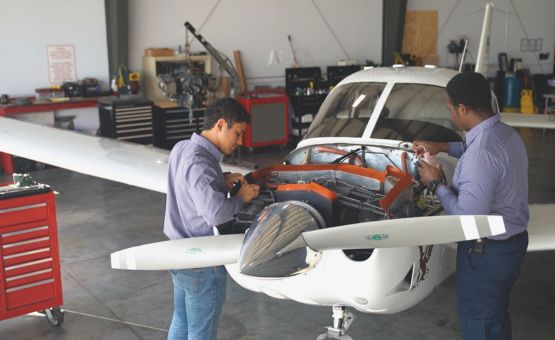By Ricker Farmer
Without needing a certified flight instructor course, one could tell the production of heat is a natural by-product of the internal combustion engine. If left unregulated, excessive heat can cause serious damage or engine failure. When the outside air temperature increases in the summer, any flaws in the cooling components of an aircraft’s engine become more noticeable.
One of the most important components of cooling an air-cooled aircraft engine is the baffle seal that maintains the air pressure under the cowling. A tear or a gap in this seal can reduce the amount of flow over the engine cylinders.
So, how do we control the operating temperature of our aircraft engines? Let’s start with the common engine cooling systems and how they compare to automobile engines.
Automobile engines (for the most part) are liquid-cooled. As the fluid circulates through an engine it absorbs heat. The fluid cools once it flows through a radiator. The radiator exchanges the heat from the fluid to the outside air. The fluid is then circulated through the engine again to repeat the process. While liquid-cooled engines have many benefits to the air-cooled design, many aircraft manufacturers don’t use them due to their added weight and complexity.
As the name implies, air-cooled engines are cooled by direct airflow over the engine rather than liquid-cooled counterparts, air is less dense than liquid and therefore does not dissipate heat as quickly. In order to adequately cool an aircraft engine, a significant amount of air is required to cool an engine to acceptable levels.
While air-cooled engines also circulate oil through oil coolers to help with the temperature regulation of the engine, these oil to air heat exchangers are believed to account for only a relatively small amount of the overall cooling of the engine as compared to airflow. Most of the cooling in general aviation aircraft engines are controlled by a process called “pressure cooling.”
Pressure cooling is accomplished by placing a cowling around the engine and using a system of baffles to seal the air entering the air inlets. The result is a high-pressure area that forces air to flow down and between the heat radiating fins on the engine cylinders. Some aircraft also allow the pilot to regulate this airflow through the use of cowl flaps. Opening the cowl flaps reduces the pressure below the engine and allows a larger volume of airflow for cooling.










